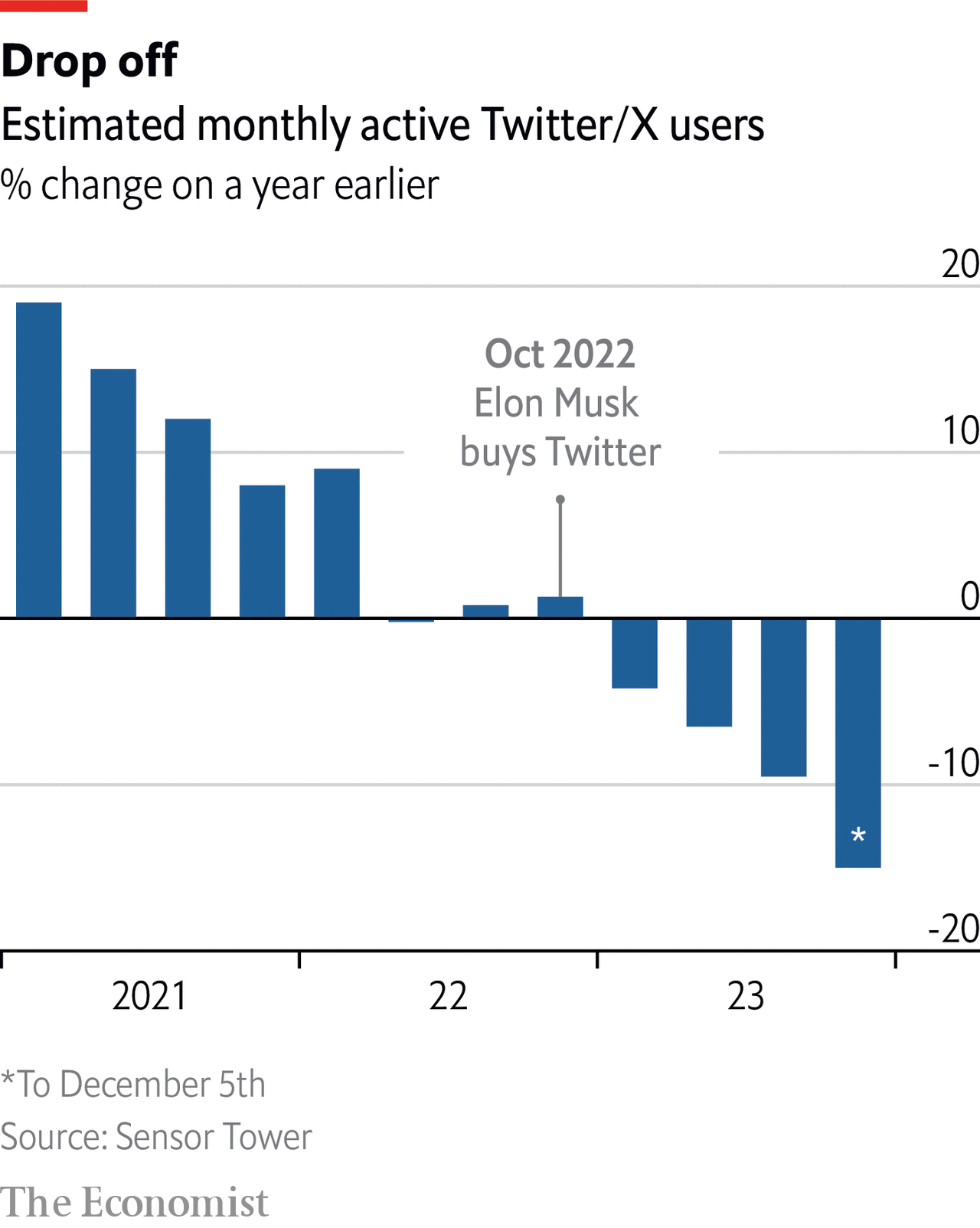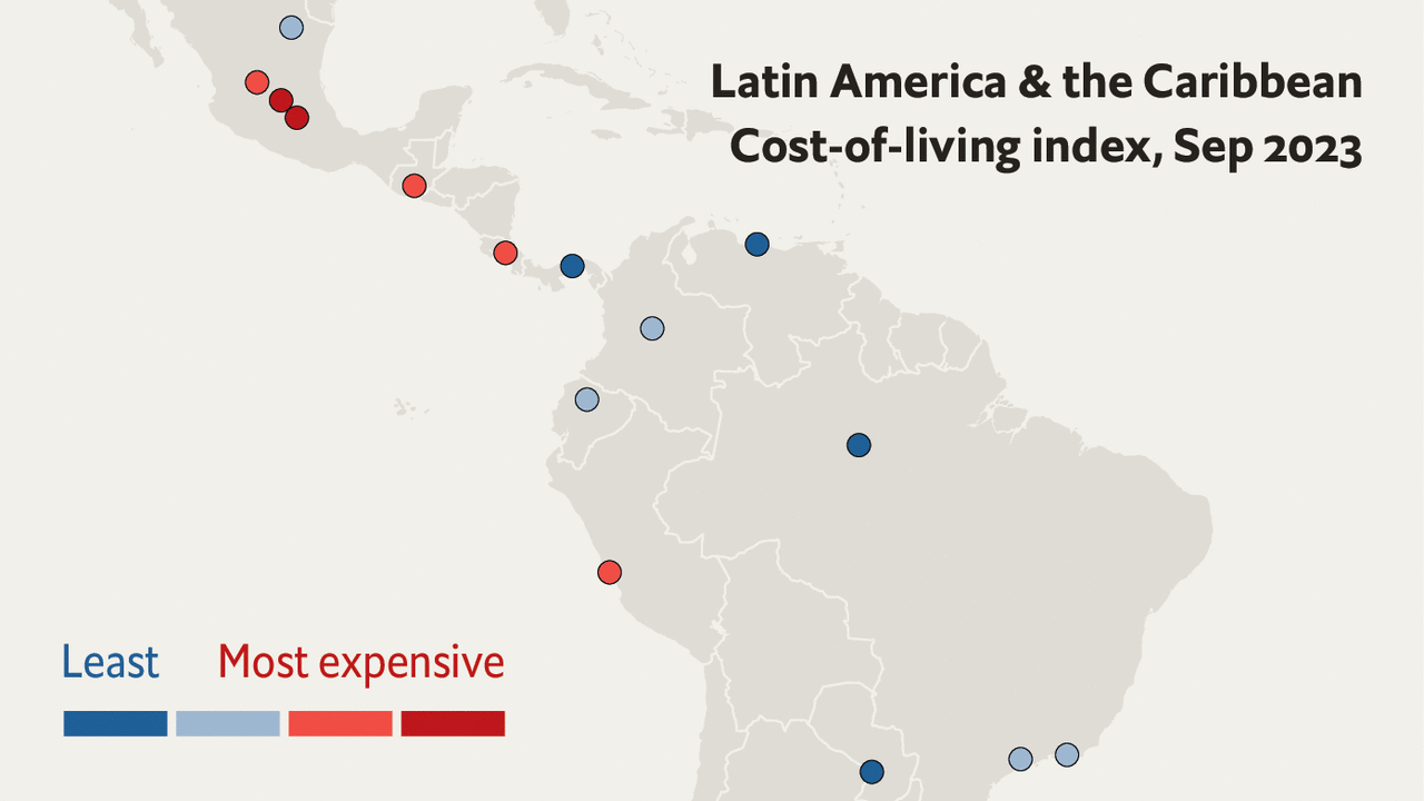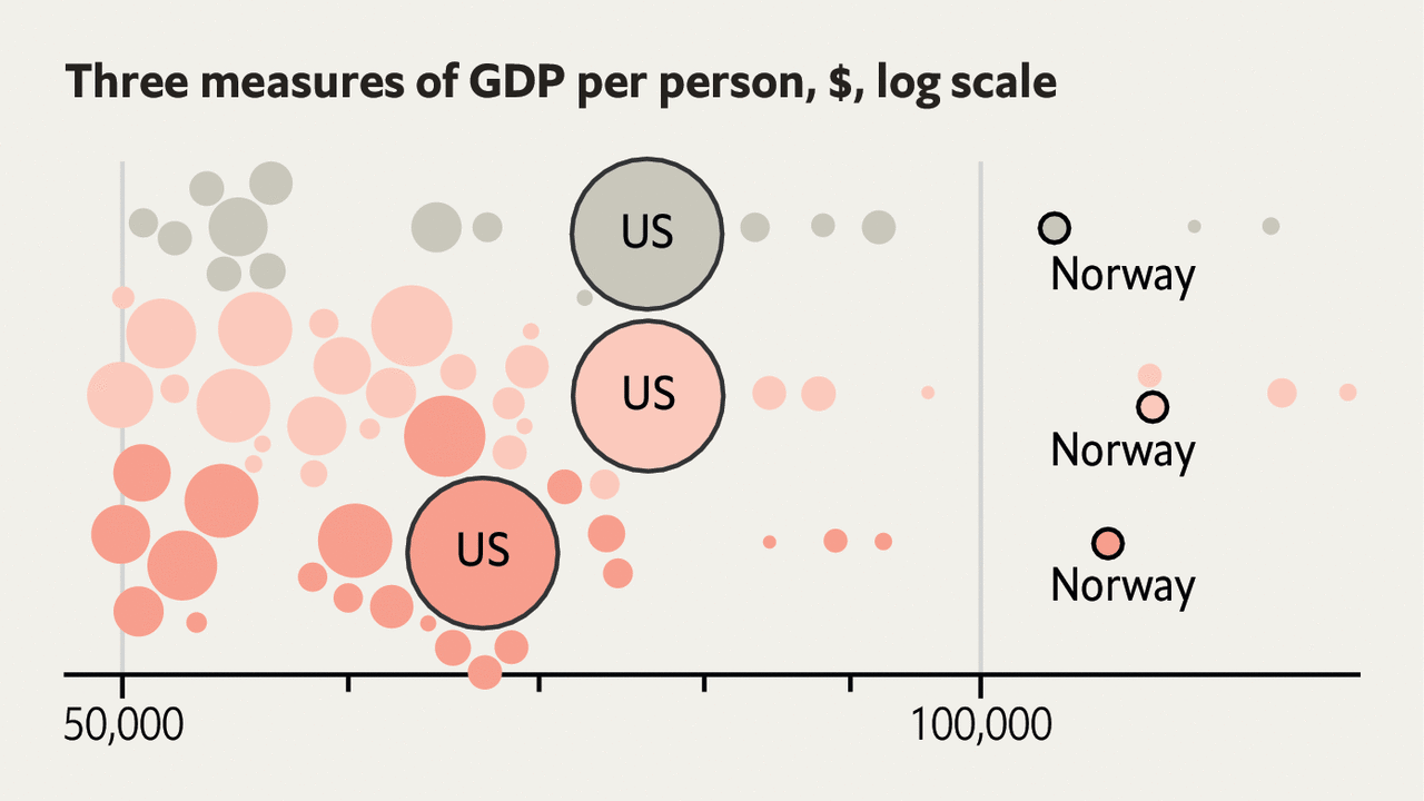Has Twitter (now X) become more right-wing?
Our analysis of the platform’s political centre of gravity
To read more of The Economist’s data journalism visit our Graphic detail page.
FIRST HE DABBLED in digital payments. Then he revolutionised the electric-car industry. After igniting a new space race, Elon Musk set out on a new challenge. In 2022 he agreed to pay $44bn for Twitter (since renamed X), just as tech stocks started to slide. It has been a costly adventure for the serial entrepreneur: advertisers are retreating, and app downloads and user numbers appear to be falling. How has all that changed the site’s demography?
Leftist users had threatened to quit the platform if Mr Musk took charge, amid concerns over his approach to free speech. Our data suggest they were not bluffing. Within 24 hours of announcing his intention to buy Twitter in April 2022, the number of accounts following Democrats in the Senate dropped by 0.2%. Accounts linked to Republicans, however, increased by 0.8%. After the sale was completed six months later, we noted these trends had strengthened.
Such big swings in follower numbers across many accounts usually indicate an operation to clean up “bots”—automated accounts controlled by software. But the vast majority of Republican accounts gained significant numbers of followers, which suggests a clean-up was not the cause. Twitter responded to these sudden changes in April 2023, to say that they were driven by the creation and deactivation of accounts. Our latest calculations show the pattern has continued throughout the rest of 2023 (see charts).
Senate Democrats have lost an average of 3% of their followers since October 2022. Republicans, meanwhile, have gained around 20% more since then. Bernie Sanders, a left-wing independent senator from Vermont, lost almost 400,000 followers (or roughly 3% of his base), more than any other senator. Rand Paul, a conservative senator from Kentucky, gained more than 1m followers, an increase of around 25%.
Despite the changes, the site still leans heavily Democratic. The party’s senators have 50% more followers than their Republican counterparts (though that is well below the 85% lead they had in October 2022.)

Other signs of how X’s political centre of gravity may have shifted are harder to measure. Sensor Tower, an analytics company, estimates that downloads of the app are down by 38% compared with a year ago, and that X may have lost around 15% of its monthly users. (This may actually be down to a purge of bots, rather than a retreat of liberal users.) The drop will do little to calm advertisers, who are already spooked by an apparent increase in unsavoury content.
Mr Musk’s fans reckon that his approach to social media delights X’s everyman-user. But the data suggest his swashbuckling adventures are yet to pay off.■
More from Graphic detail

How many books will you read before you die?
And tips for choosing the best ones

Why are cities in Latin America getting more expensive?
In this year’s cost-of-living index they rose by an average of 13 places

The world’s richest countries in 2023
Our ranking compares economies in three different ways